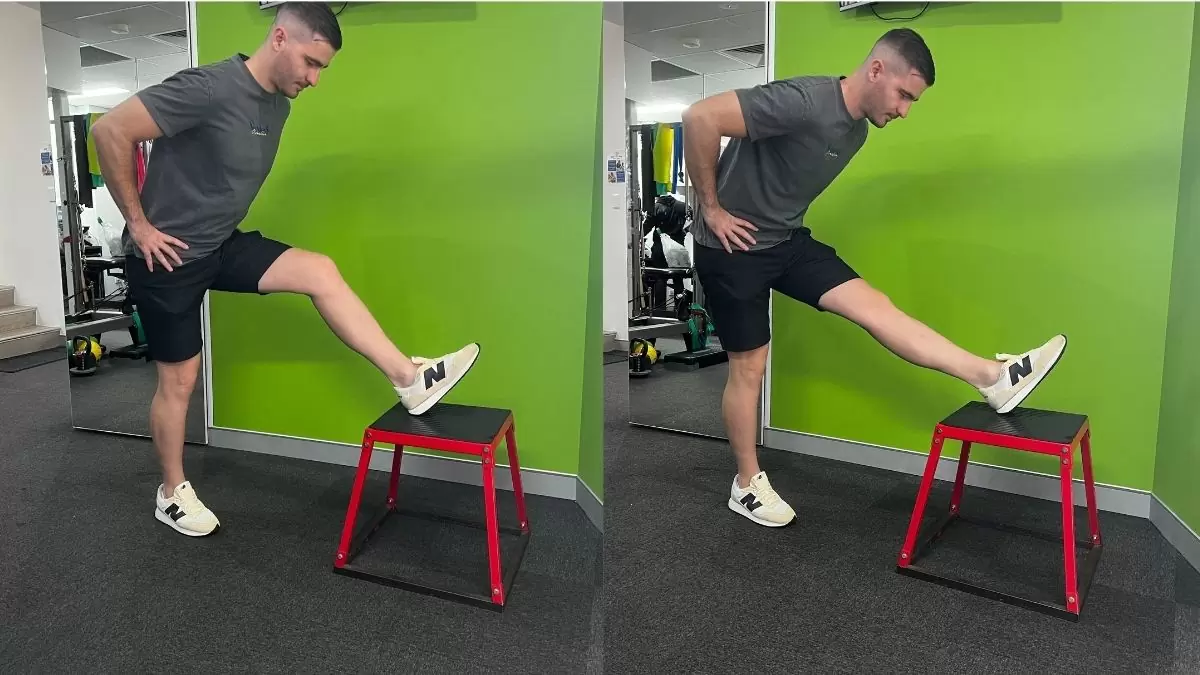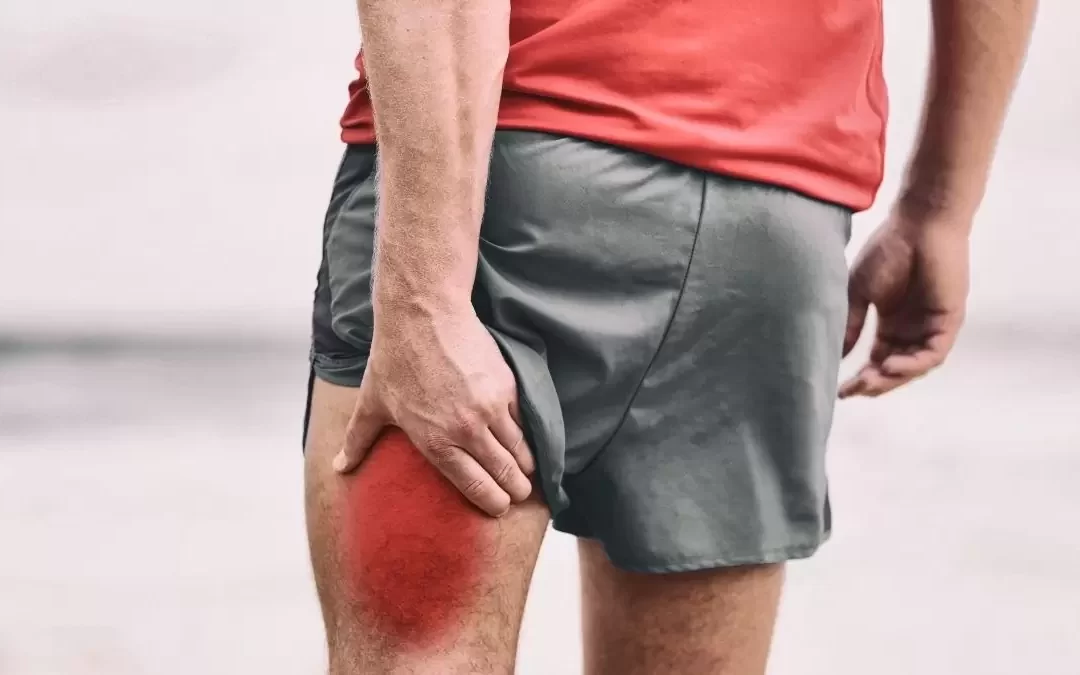Hamstring muscle injuries are one of the most common injuries in sports, with incidence rates ranging from 12-31% per season in soccer players (Ekstrand et al., 2011), 16-25% in track & field athletes (Askling et al., 2007) and up to 21% in Australian rules football. (Brukner et al., 2017).
Hamstring injuries are generally associated with maximal sprinting, acceleration or kicking, and can also occur because of overstretching. Muscle tears are characterised by the failure of the muscle to withstand force leading to tearing of muscle fibres. As a biarticular muscle (a muscle that crosses over two joints), the hamstring has reduced capacity to withstand tension making it more susceptible to injury. Unfortunately, up to a third of sustained hamstring injuries reoccur with greater severity.
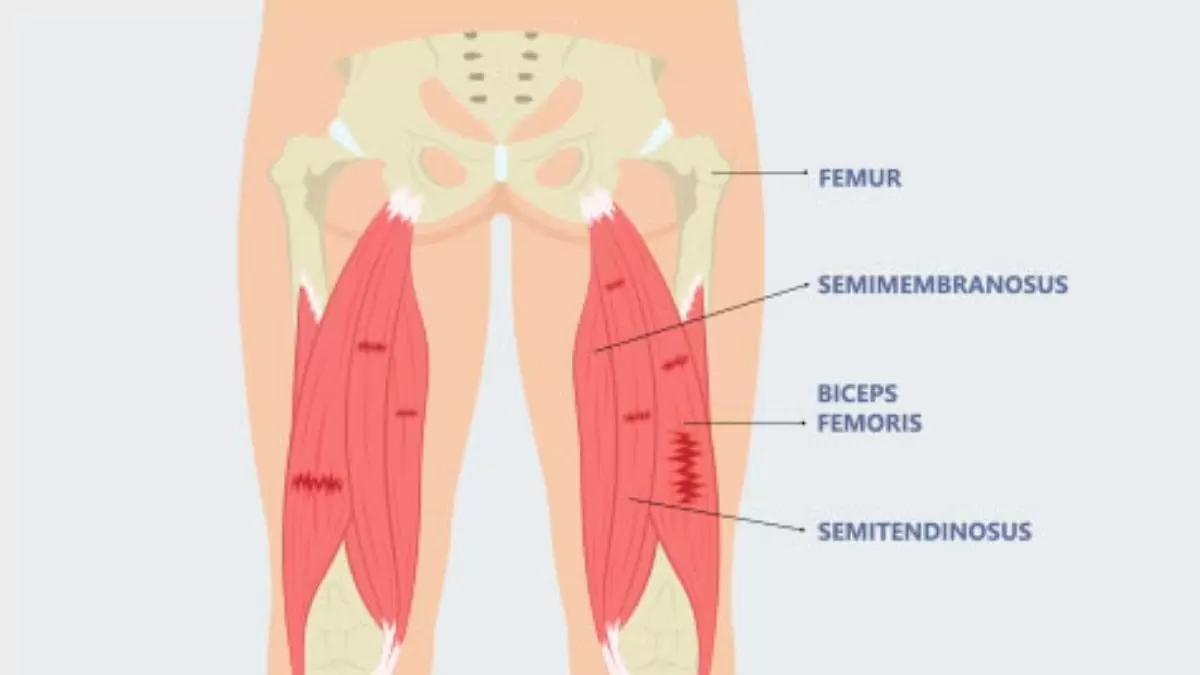
Features
Features of a torn hamstring may include a sudden onset of sharp pain through the posterior thigh, weakness, reduced flexibility, point tenderness at the hamstring and often bruising. Physiotherapists are best placed to diagnose and classify a tear and assist with rehabilitation and safe return to life/sport.
Severe tears can be disabling, whereas smaller strains can limit activity and can often become recurrent in nature, thus early physio assessment & treatment is critical. Those with a history of hamstring injuries have a 3.6 times higher risk of sustaining a future hamstring injury (Martin et al. 2022). This is often attributed to poor management strategies or a lack of treatment, returning to play too soon or neglecting to implement preventative measures. Knowing this, it’s vital that hamstring strains are managed properly to ensure recurrent injuries do not occur.
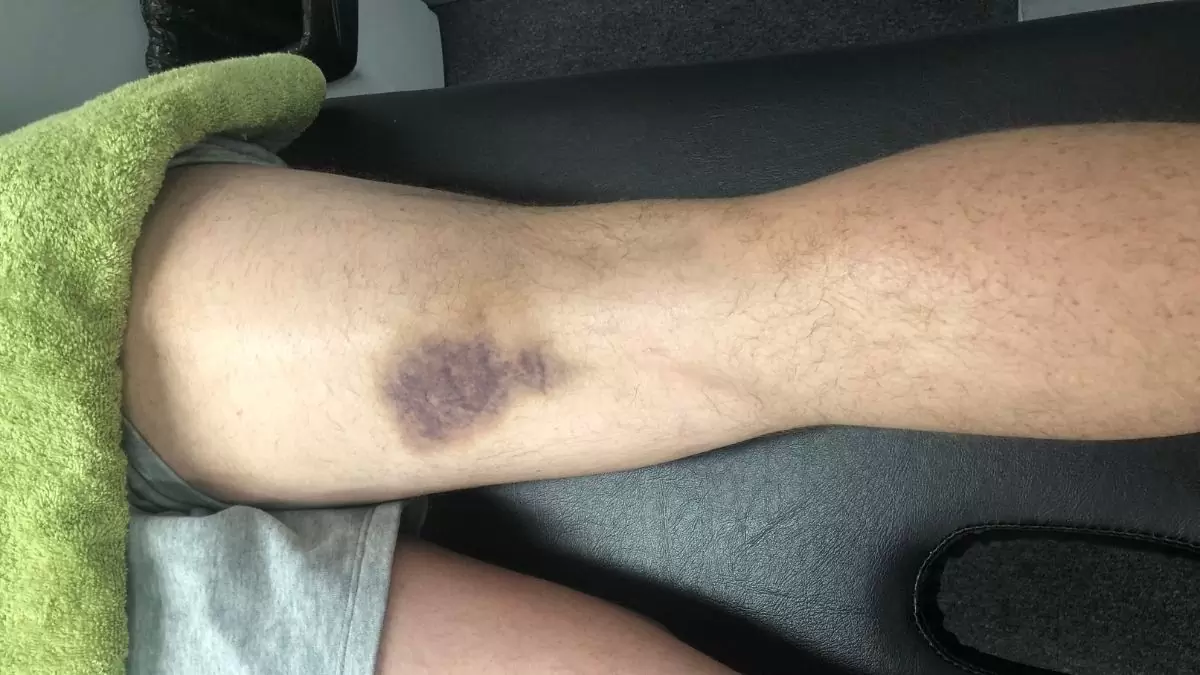
Risk Factors:
- Previous hamstring injury (within last 8 weeks), a previous knee injury or pubic bone stress
- Kicking sports e.g. AFL, soccer, ballet
- Age (e.g. AFL players >23 years old – Orchard et al.,2013)
- Reduced hip range of motion and straight leg raise (hamstring length)
- Poor Hamstring to Quadricep strength balance ratio
- Muscle fatigue (80% of injuries happen towards the end of a match)
- Poor Muscle activation patterns/weakness (weak core or gluteals)

How does Physiotherapy Help?
Early physiotherapy diagnosis and management is crucial to achieve an optimal outcome and safe return to pre-injury function and to prevent recurrent injuries. Our physio’s will assess the severity of the hamstring injury, and we will assess for biomechanical factors including weakness in other muscle groups that may lead to increased loading through and eventual failure of the hamstring muscles. Our physio’s will then implement acute management strategies in the initial stages of healing and recommend an appropriate treatment plan based on the patient’s goals and the extent of the damage.
Treatment will focus on facilitating muscle healing through manual therapy and the prescription of a progressive exercise program including eccentric, concentric and neuromuscular strengthening, stretches, and sport based functional exercises. Askling et al (2014) showed rehabilitation programs that incorporate eccentric exercises improve both return to sport time and recurrence rate.
An end stage running program will be included to ensure graduated return to sports involving agility, prolonged running, and a graduated sprinting program. Any biomechanical deficits will also be addressed prior to return to sport or specific high-level tasks. Sidler et al (2013) demonstrated that hamstring rehabilitation protocols incorporating agility, trunk stability, progressive running and eccentric strengthening achieved earlier return to sport and low re-injury rates.
A physiotherapist is best placed to evaluate criteria for return to sport with pain on palpation (De Vos et al., 2014), strength deficits of greater than 5% (Malliaropoulos et al., 2011), insecurity with the active hamstring test (Askling et al., 2014) and poor single leg bridge test (Freckleton et al 2014) all being predictors an athlete is not safe to return to sport. Various injury characteristics can also be used to predict recovery with high pain levels, bruising, proximal location, longer time to walk test and decreased passive straightening, predicting greater than 40 days to return to sport (Erickson et al., 2017).
A safe discharge and full recovery is based on objective measures to ensure that muscle strength imbalances, technique and biomechanics are corrected to reduce the likelihood of re-injury. We use our AxIT dynamometers in clinic to assess strength and muscle endurance to ensure that these imbalances are addressed.
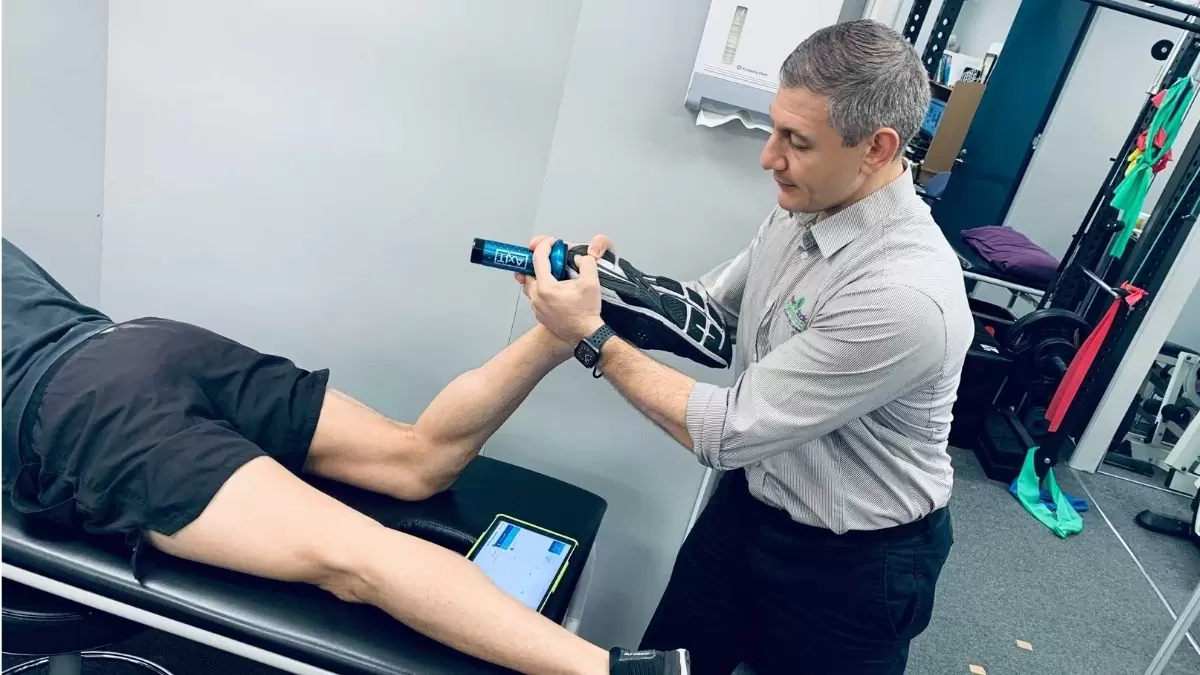
Exercises used in the Recovery of a Hamstring Tear
Exercises following a hamstring tear vary depending on the stage of recovery and the activity, sport or functional goal the patient wishes to return to. Rehab exercises target the hamstring strength and activation specifically, but also address the core, posterior chain, and lower limb muscle activation patterns in order to prevent recurrent issues. The following are some varied exercises that may be beneficial during rehab.
Swiss Ball bridge and Curl
Aim: Improve posterior chain strength targeting hamstrings, glutes and core muscles using concentric and eccentric movements
How do I do the exercise: Lay on your back with your feet up on the Swiss ball and knee out straight. Lift your hips up into a bridge and hold this position. Whilst keeping your pelvis level, allow your knees to bend rolling the Swiss ball back towards your pelvis contracting your hamstrings, and then simply control the ball as you roll it back, so your knees are straight (hips still in the air). Come down from the bridge position and repeat for reps. You can vary the level of core stability by changing arm position and this can also be progressed to a 1-legged movement.
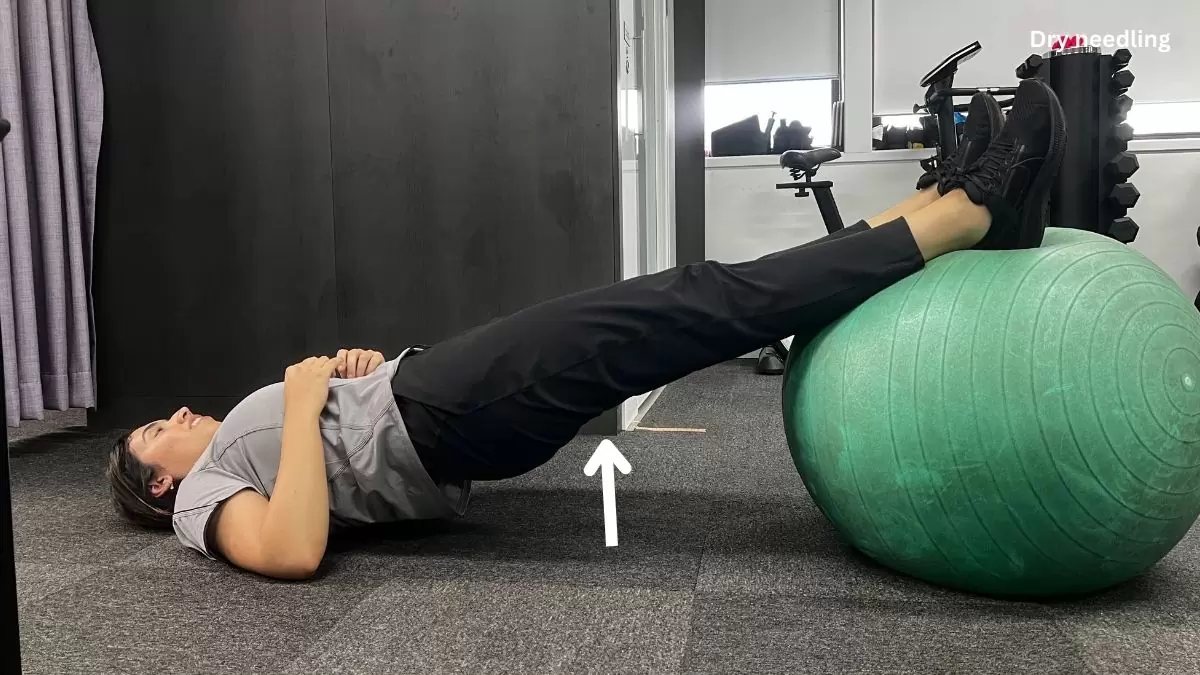
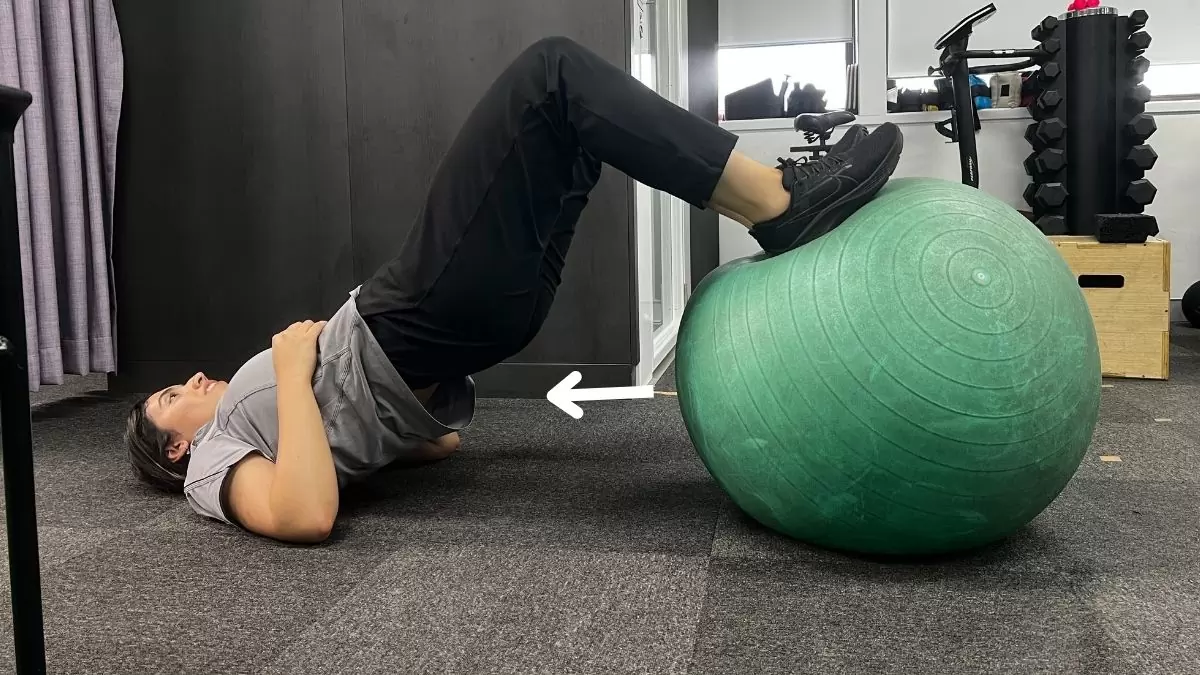
Clinical Pilates Reformer supine hamstring extension
Aim: To strengthen the posterior chain muscles including the hamstrings, gluteal and core muscles and improve hamstring flexibility.
How do I do the exercise: Lay on your back on the reformer with both feet in the straps, straighten both feet up to together the ceiling and arms by your side. While keeping the knees straight and ankles in line with each other, bring both legs down towards the ground. Ensuring your core is engaged throughout the movement, sweep the legs back up towards the ceiling. Level of difficulty can change your core strength, type of equipment used, and strap variations.
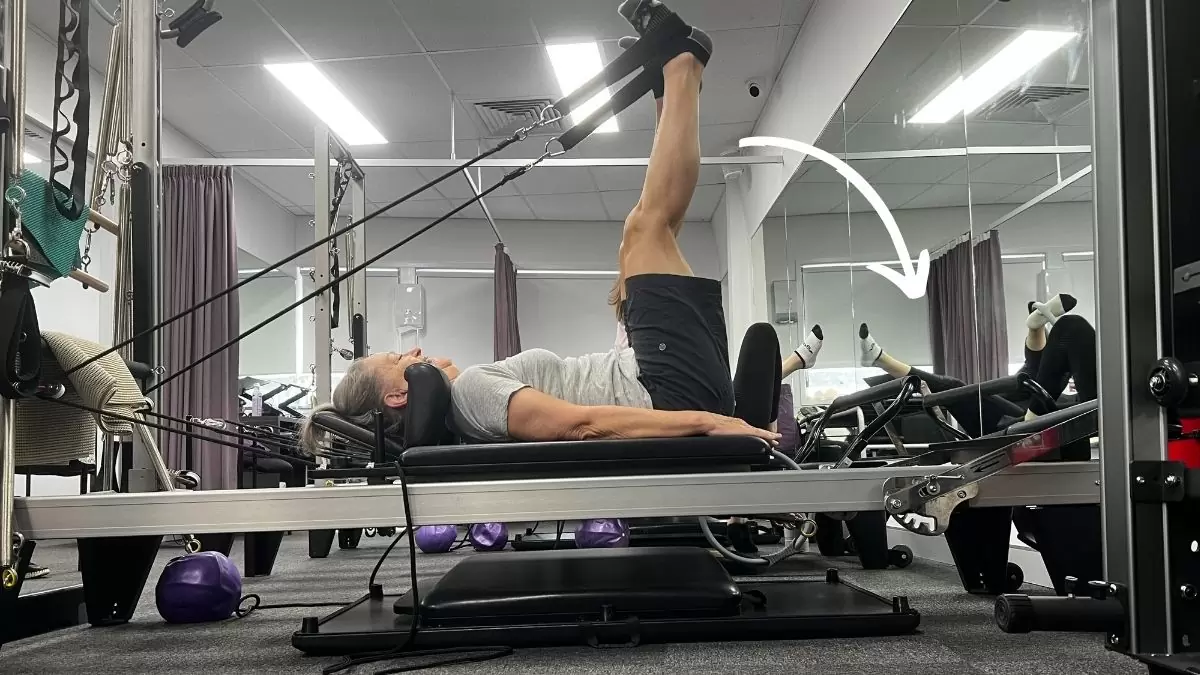
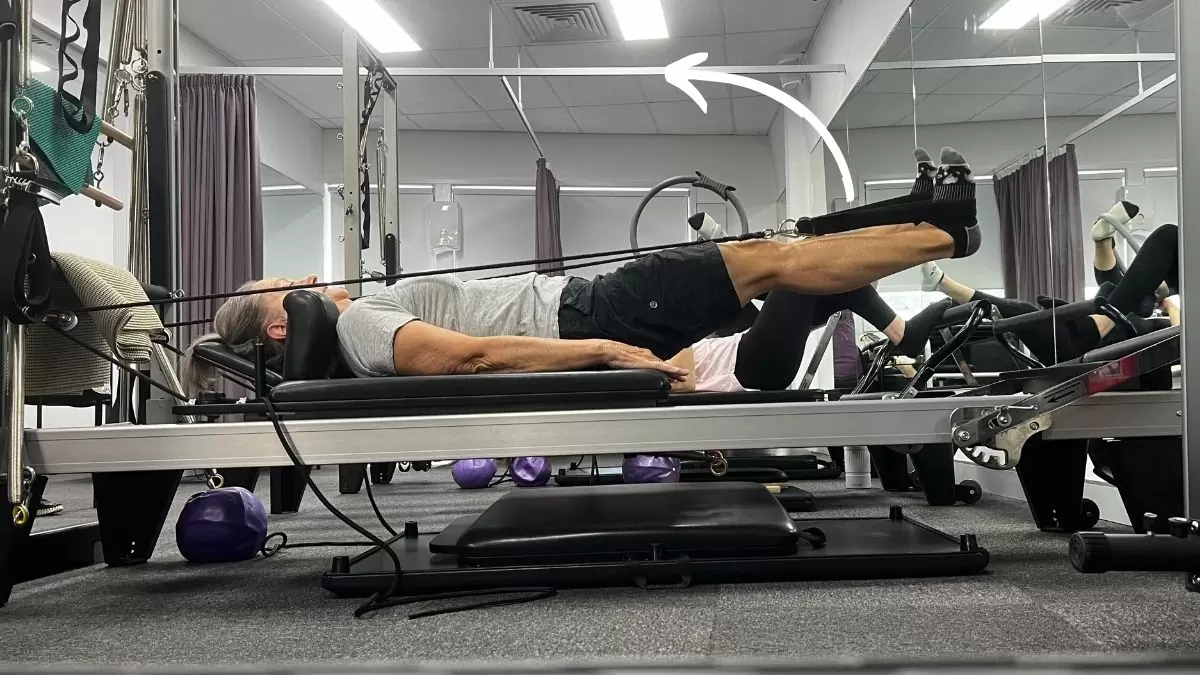
Single leg Hamstring Stretch Variations
Aim: To improve flexibility and hamstring length
How do I do the exercise: Stand up straight with one heel resting against a chair/stool. Keeping your knee straight or slightly bent, bend slightly through your hips and reach your arms down towards the foot on the raised platform. You should feel a stretch in the hamstring muscle (back of your thigh). Hold the stretch for 20-30 seconds and then return upright. Repeat on the other leg.
